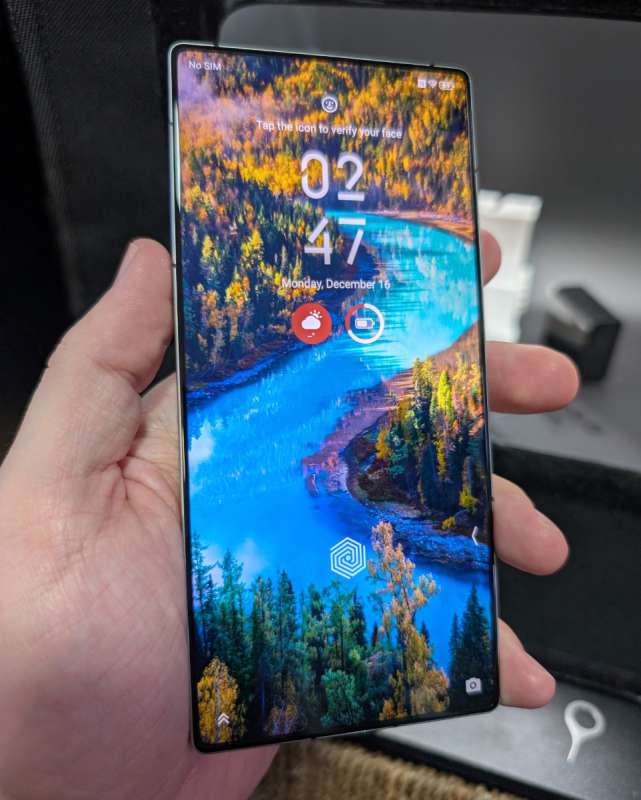
REVIEW – I had the pleasure of reviewing the REDMAGIC 8s gaming phone a few years ago, and I was impressed with the sheer power it offered at a surprisingly reasonable price. At that time, I didn’t switch to it for my daily driver because the cameras were poor, and I thought I needed weather resistance (as I wrote this review, I realize it’s been at least a decade since my phone really got wet, so I have re-evaluated my priorities a bit). This time around the REDMAGIC has increased the screen-to-body ratio, eliminated camera bumps entirely, and added some seriously powerful hardware to their newest gaming phone (the REDMAGIC 10 Pro gaming smartphone). I used it fairly heavily for a few weeks and have many thoughts. Read on!
⬇︎ Jump to summary (pros/cons)
Price: $649-999 ($649 Lightspeed 12G/256G model reviewed)
Where to buy: REDMAGIC and Aliexpress
What is it?
The REDMAGIC 10 Pro gaming smartphone is fairly well described by its name. It sports a large and bright 6.85 inch 144 Hz AMOLED display with very narrow bezels and a hidden under-display camera, the Snapdragon 8 Elite chipset, a monster multi-day battery with ultra-fast charging, and much more. It’s designed to run any mobile game with ease and has some tricks up its sleeve to get even smoother visuals out of framerate-locked games. Add in the touch-sensitive shoulder triggers that can be mapped to any part of the screen and loud clear stereo speakers, and you’ve got the ultimate portable gaming phone package (at least that’s what their marketing would like you to believe, I will kick the tires and see if the glossy sheen peels away after some use).
What’s included?
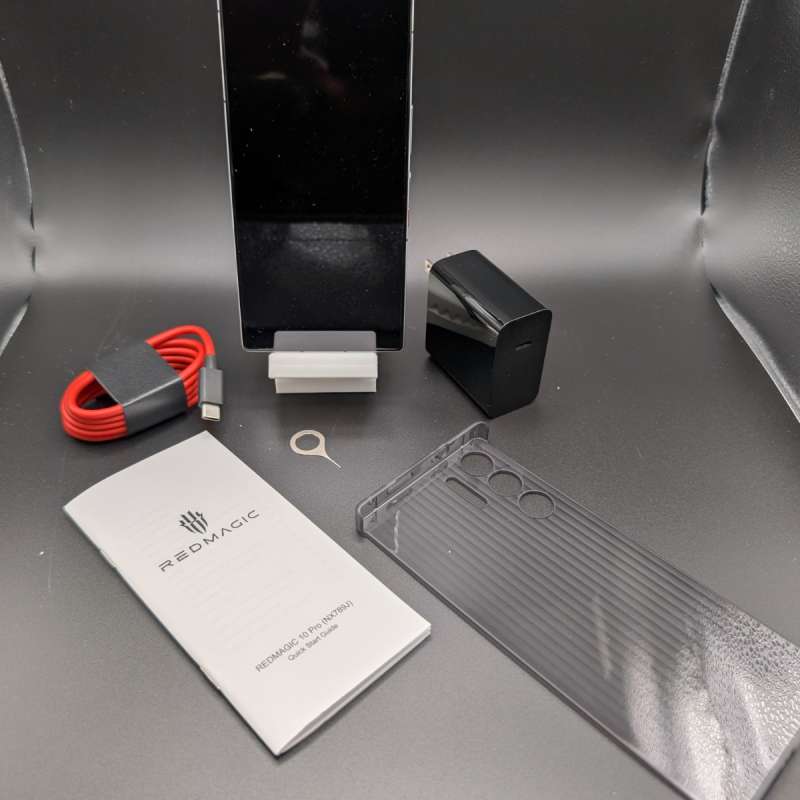
- REDMAGIC 10 Pro Phone
- Clear phone case
- 80-Watt power adapter
- Type C data/power cable
- SIM tray ejector
- Warranty card
Tech Specs
- Dimensions: 163.42mm x 76.14mm x 8.9mm (6.43 x 2.99 x 0.35 inches)
- Weight: 229 grams
- Frame/exterior material: Metal/Glass
- Colorways: Shadow, Dusk, Moonlight, Lightspeed
- Memory: 12GB-24GB RAM, 256GB-1TB ROM (12GB/256GB Lightspeed model reviewed)
- RAM/ROM type: LPDDR5X Ultra/UFS 4.1 Pro
- Display: 6.853 Inch BOE Q9+ FHD+ @ up to 144 Hz
- Touch Sample rate: Average 960 Hz, Highest 2500 Hz
- Display Resolution: 2688 x 1216 pixels
- Aspect Ratio: 20:9
- Display type: AMOLED
- Brightness: 2000 Nits Max
- Display protection: Corning® Gorilla® Glass
- Display color gamut: 100% DCI-P3
- Cooling system: ICE-X Magic Cooling System (Liquid metal conductivity material, multiple layers of gel/graphene/rare-earth/other materials, 23K RPM Turbofan with 58 blades)
- Hardware: Snapdragon 8 Elite SoC
- CPU Frequency: up to 4.32 Ghz
- GPU: Adreno™
- SIM: Dual nano-SIM tray
- WiFi: 802.11b/g/n/ac/ax (Tri-band 2.4G, 5G, 6G) with HBS support
- Bluetooth: 5.4
- GPS: Dual GPS (L1+L5)
- NFC: Yes
- HDMI: with converter
- USB-C features: PD interface (up to 100 watts), supports 4k video DisplayPort-over-USB
- 2G Bands: GMS 2/3/5/8
- 3G Bands: UMTS B1/2/4/5/6/8/19
- 4G Bands: FDD-LTE B1/2/3/4/5/7/8/12/17/18/19/20/26/28A/28B/66, TDD-LTE B34/B38/39/40/41/42
- 5G Bands: NR n77/n78/n1/2/3/5/7/8/20/26/28/38/n40/n41/66/71
- NSA: ENDC n1/7/28/38/40/41/71/77/78
- LTE: CA B1/2/3/4/5/7/8/20/28/38/39/40/41/66/B42(JP)
- Uplink: CA_39C, CA_40C, CA_41C, CA_3C, CA_7C, CA_38C
- NR CA: n1/3/8/20/28/40/41/71/77/78
- Cameras: 50 MP Rear Main camera with OIS, 50 MP Rear Ultrawide with OIS, 16 MP front-facing selfie under-display camera
- Rear camera sensor: OmniVision OV50E 1/1.5
- Other sensors: Fingerprint, G-sensor, Electronic Compass, Gyroscope, Proximity, Ambient Light Sensor, Sensor Hub
- Operating System: REDMAGIC OS 10 (Android 15)
- Battery: 7050 mAh dual-cell battery
- Ports: USB 3.2, Type-C, DP, Dual Nano-SIM Slot, 3.5mm Audio Jack
- Shoulder trigger touch-sensitive pads: 520 Hz touch sampling
- RGB Lights: fully customizable
Design and features
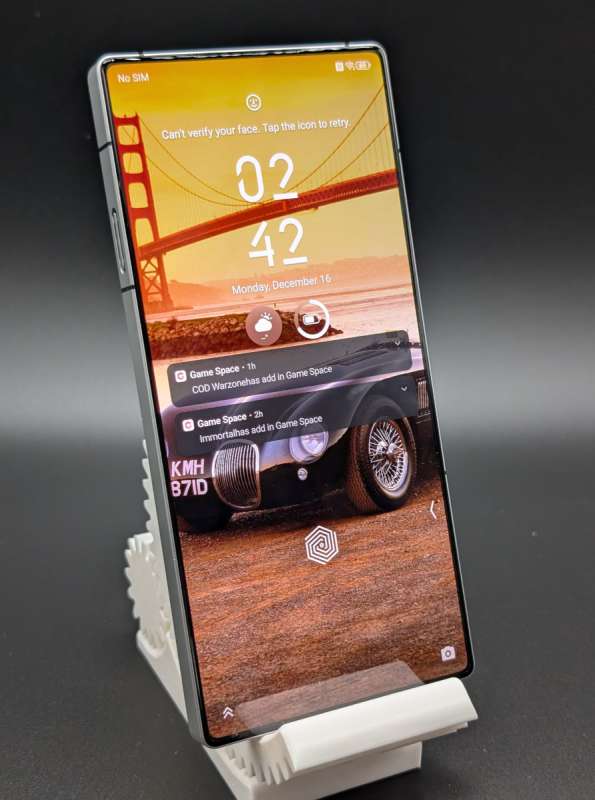
The REDMAGIC 10 Pro gaming smartphone is a fairly large metal and glass phone, but it’s pretty similar in size and weight to other large flagships on the market. It is available in black, white, and grey colorways with varying designs on the back, I was sent the “Lightspeed” colorway which is white and silver. The phone feels premium and well built, and the first thing you’ll notice is the bright colorful display that fills nearly the entire front of the phone with a 95.3% screen-to-body ratio (the iPhone 16 Pro Max has a 91.4% screen-to-body ratio for comparison). I was worried about accidental palm touches with the extremely narrow bezels, but I didn’t experience any at all in all my testing.
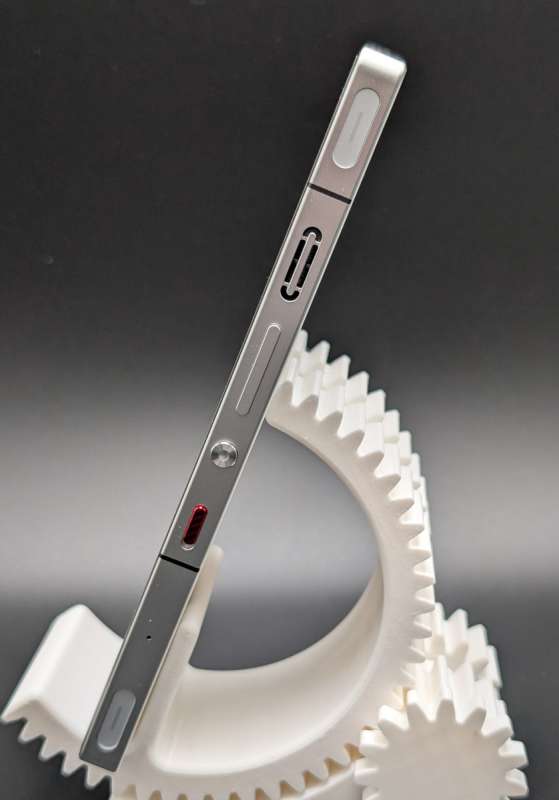
The right side of the phone features all of the buttons and sliders. From top to bottom (on the above photo), you have a shoulder touch sensor, an air vent for the active cooling system, volume rocker, power multifunction button, game mode slider switch, and the other shoulder touch sensor. Notice the complete lack of any camera bump, the phone is less than a millimeter thicker than an iPhone 16 Pro Max but packs almost double the battery capacity and includes the cameras completely internal to the body!
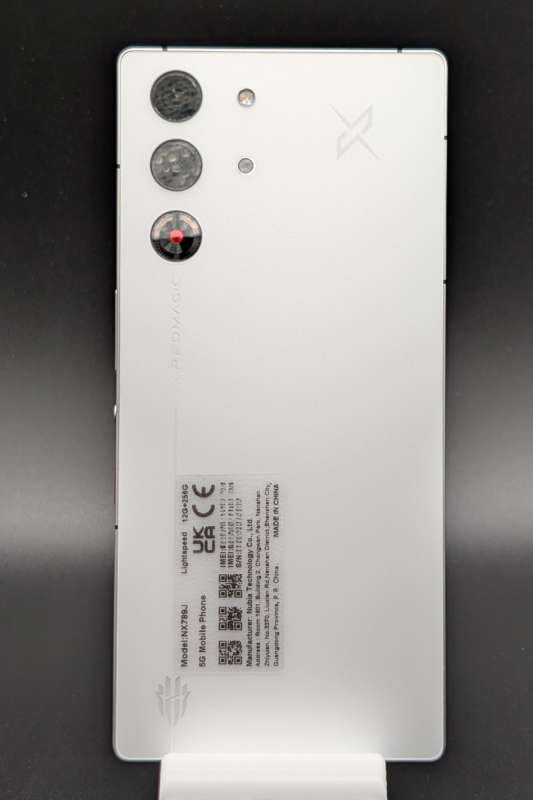
A shot of the back shows the white design with subtle REDMAGIC branding and other etched designs, which become much less subtle once the RGB lighting turns on. The RGB effects have a nice variety of customization options, including fully off if you’d prefer to look just a bit less gamer-ey as you use it in public. Notifications can be set to flash different patterns and colors, which can be nice if you like that sort of thing.
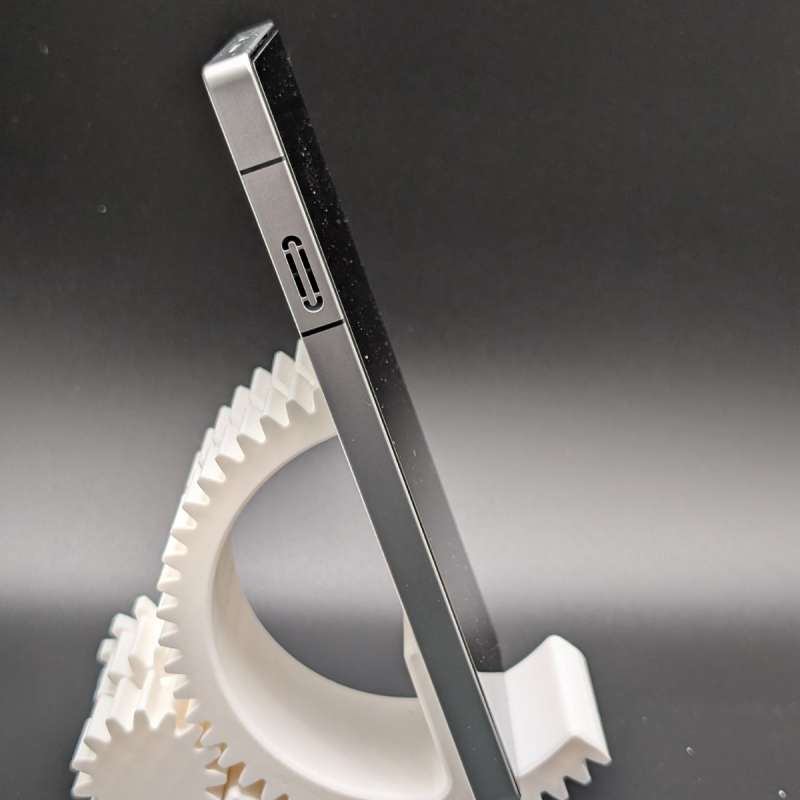
The left side of the phone is a bit more boring, with just an air vent for the cooling system.
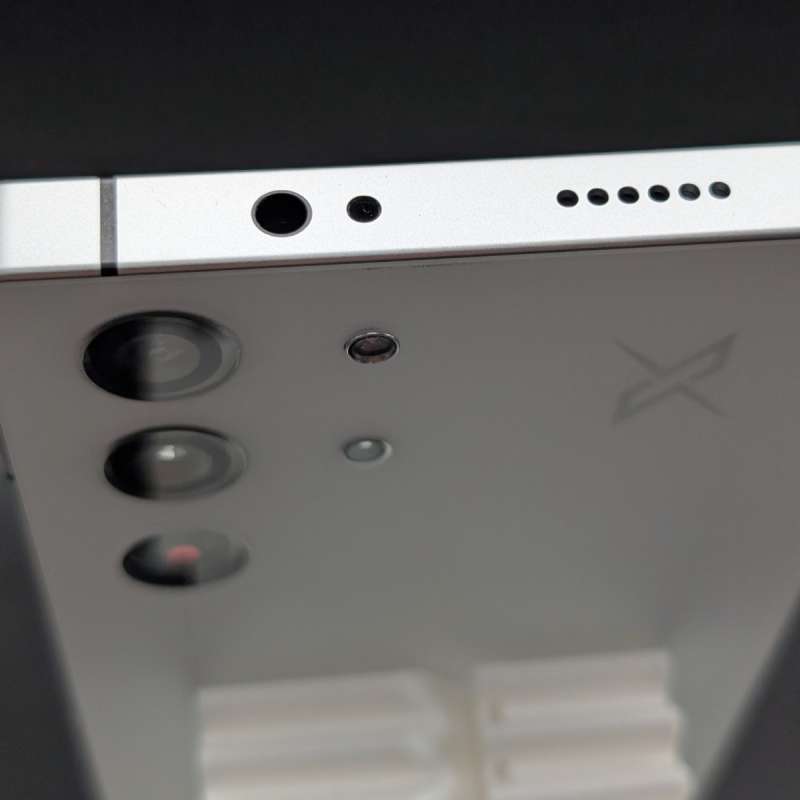
On top, we have a now-antiquated headphone jack and small holes for one of the two speakers. The headphone jack puts out great sound to my old wired AKG headphones I still keep in my drawer. Bluetooth still adds some audio lag into games, so if you’re a serious hardcore mobile gamer the inclusion of the headphone jack will be welcome.
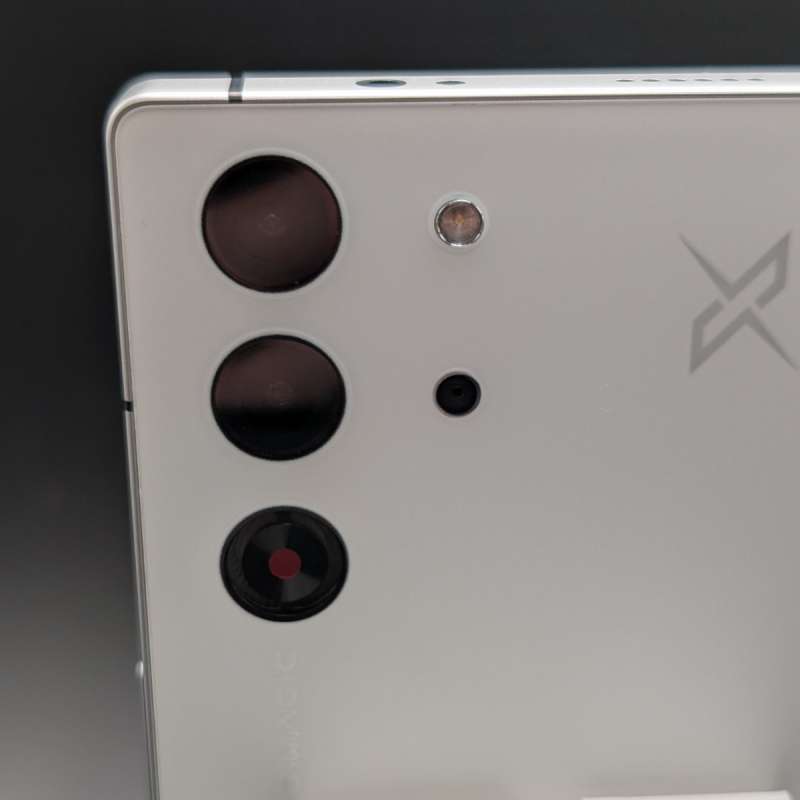
The camera system is comprised of a main 50 MP camera, an ultrawide 50 MP camera, and other sensors plus an LED flash. Both cameras include non-digital OIS stabilization.
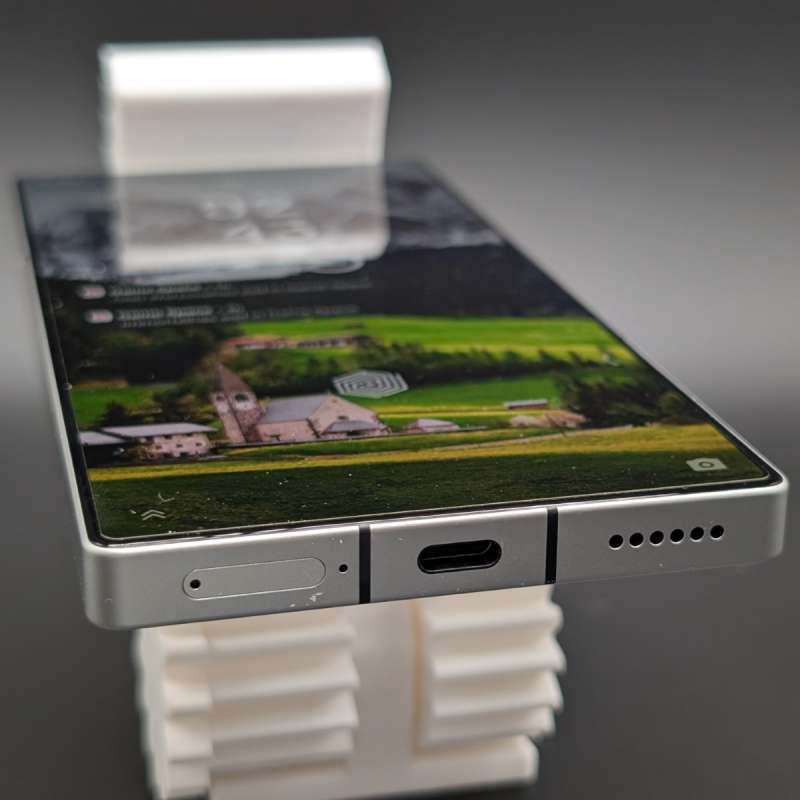
On the bottom of the phone, we have a dual nano-SIM tray, a USB-C 3.2 port for charging and data/video-out, and the other speaker. The speaker placement is good, when you hold the phone in landscape mode the speakers are naturally above where your palms grip the phone, so you don’t muffle them with your hands while playing. The speakers get very loud without distortion and seem fairly well balanced. They’re not the best I’ve heard on a phone, but they are amongst the loudest and they sound good for most things, especially games. In the photo above you can make out the under-display fingerprint sensor, which was fast and reliable for me. You can also set up face unlock, though you’re warned that is less reliable.
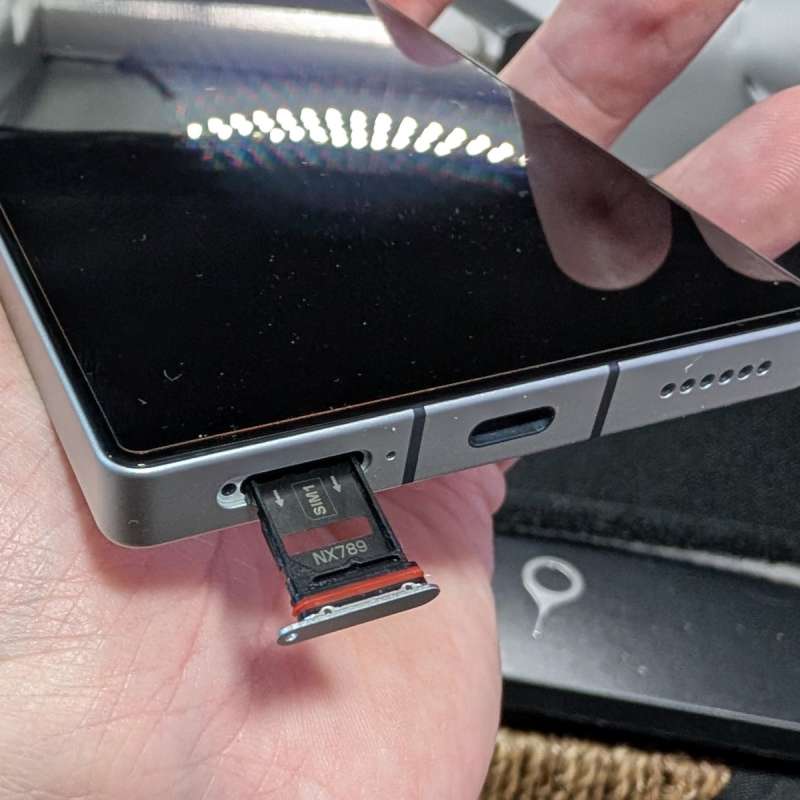
There’s a factory-installed screen protector as well, which you’ll feel when you swipe from the bottom or edges.
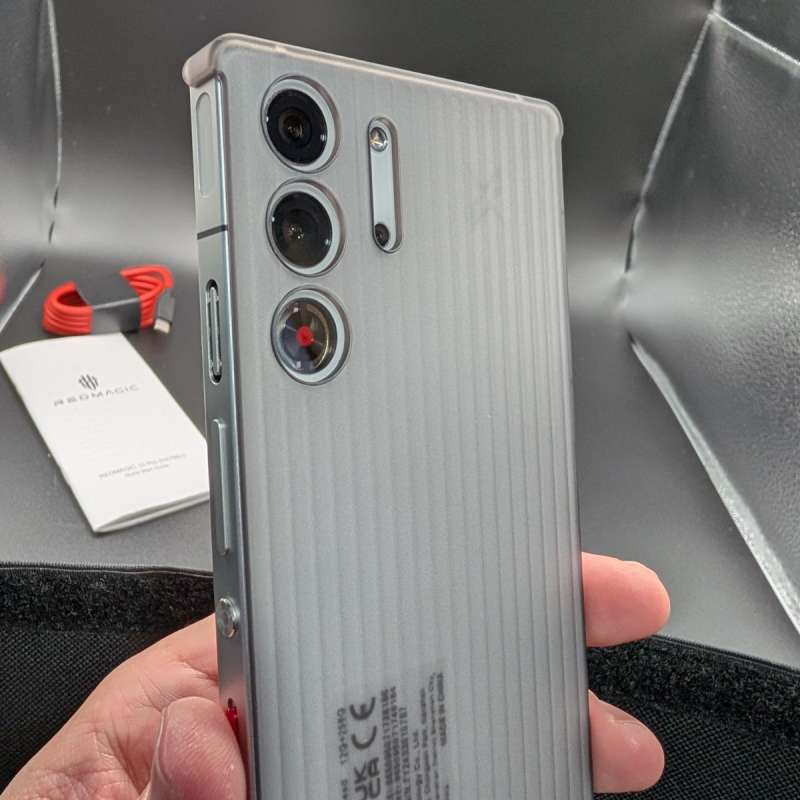
An included clear case is in the box, and fits the phone perfectly, as you’d expect. I like how it wraps around the top and bottom while leaving the sides uncovered. This lets you use the shoulder triggers and buttons, and also doesn’t make the phone feel huge when in the case. As an added bonus, it helps keep your hands from getting too hot when under heavy use (more on heat in the performance section).
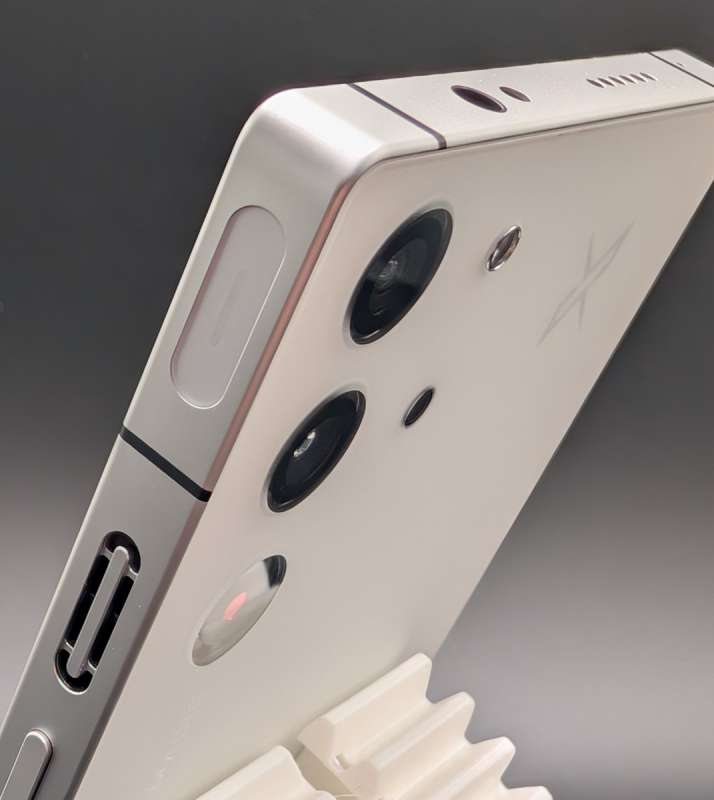
The shoulder touchpads are designed to be used as triggers, like shoulder buttons on console controllers. The neat trick with REDMAGIC gaming phones is that you can “map” these two buttons to any spot on the screen, so you can use them to aim or fire or use special abilities, which can be great for many different games.
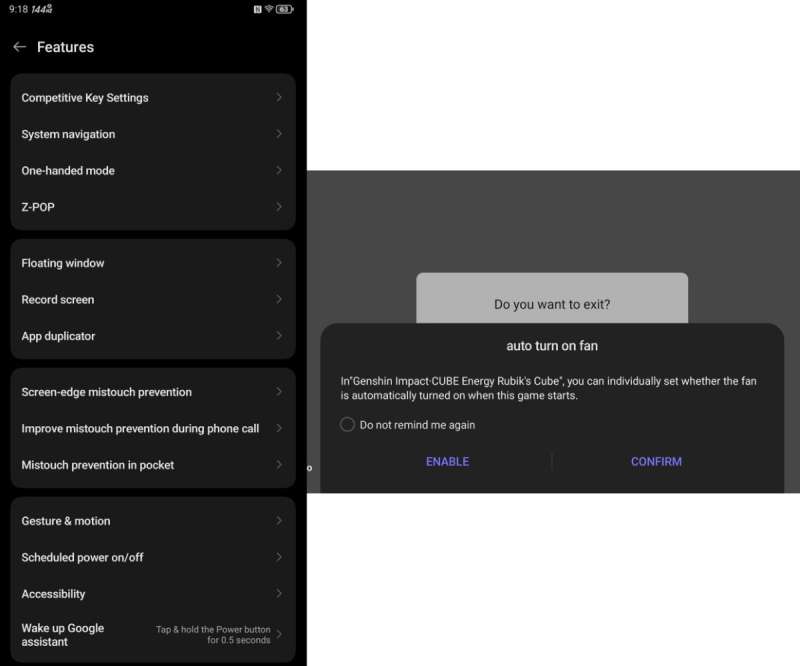
There are some fan controls, including a popup when you launch any game asking if you want the active fan to automatically turn on each time you play this game. This is great so you can choose to disable it for low intensity games and enable it for games that utilize the CPU/GPU more.
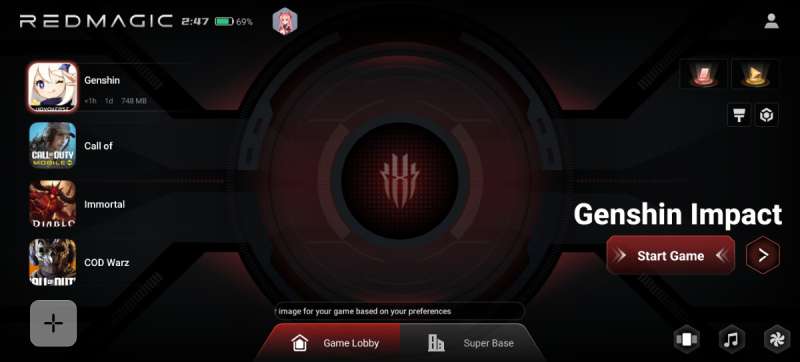
The red sliding switch on the right side of the phone immediately switches your screen to the Game Center app when toggled. You can manually add/remove games from the list shown in the app, and there’s also some on screen controls and information available while gaming by simply swiping in from either side near the top of the screen. These controls include toggling the fan, CPU settings, FPS overlays, virtual crosshairs, and much more.
Finally, there are quite a few options and settings that may be desirable to some users, but were definitely not my cup of tea, like the Mora avatar shown in the above video. Luckily, you can disable most of these things via settings menus and end up with a close-to-stock Android experience, which is what I prefer.
Assembly, Installation, Setup
The initial setup of the REDMAGIC 10 Pro gaming smartphone is identical to any other Android phone.
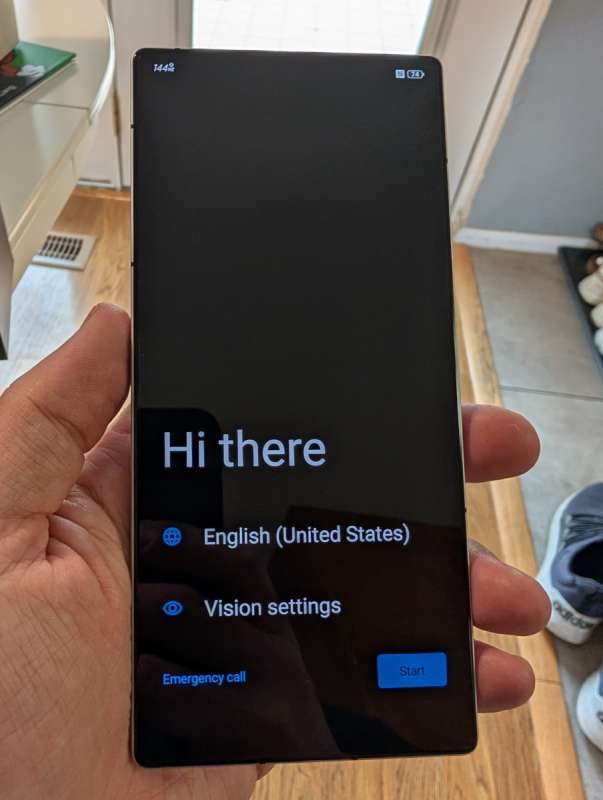
I believe there was one user agreement screen for Nubia/REDMAGIC, but everything else was run-of-the-mill Android. Charging the phone is ridiculously fast with the included 80 watt charger, and you can even plug into up to 100 watt Power Delivery chargers and power banks for 0-100% charging times under 20 minutes.
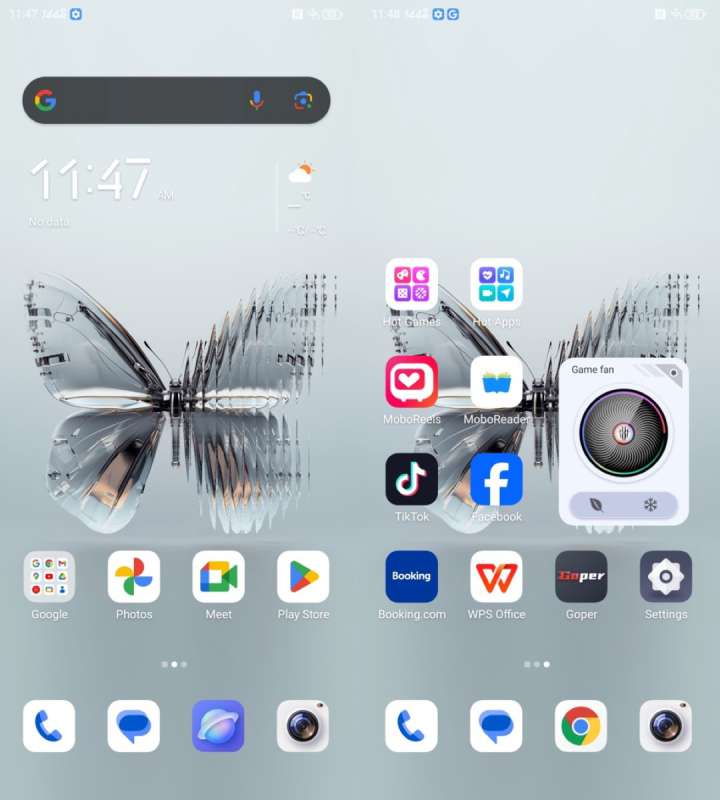
The default home screen and app drawer when you finish setting up the phone is filled with bloatware and strange apps. Some of the interface reminds me of default Android but other spots are unpolished or containing grammatical errors. I wish REDMAGIC would just use a nearly vanilla Android launcher and simply add their gaming app and maybe the fan control widget and call it a day. With a lot of disabling/uninstalling and turning features off like the “Z-Board” news screen to the left, you can end up with a much cleaner phone.
Performance
The REDMAGIC 10 Pro gaming smartphone is an absolute gaming monster, full stop. It plays any game available on the Google Play store (or Epic Games store) with ease and even offers software features to enhance games or overlay information while playing. The screen and speakers are some of the best I’ve used, everything looks and sounds beautiful while playing. I played Call of Duty, War Thunder Mobile, Genshin Impact, Real Racing, Diablo Immortal, and other games during the review period, and all ran smooth. In fact, when I was installing some of those large games, I was impressed by the Wi-Fi performance during downloads. Some of these downloads went at almost the maximum rated internet speed of my ISP, so the Wi-Fi chip is taking full advantage of my Wi-Fi 7 router’s speed, something I usually only see on my high-end gaming laptop. Some games are FPS limited to 30/60 FPS, but REDMAGIC includes a frame booster option to run the game at 60 FPS (with interpolated frames), and the results are smooth and artifact-free to my eyes.
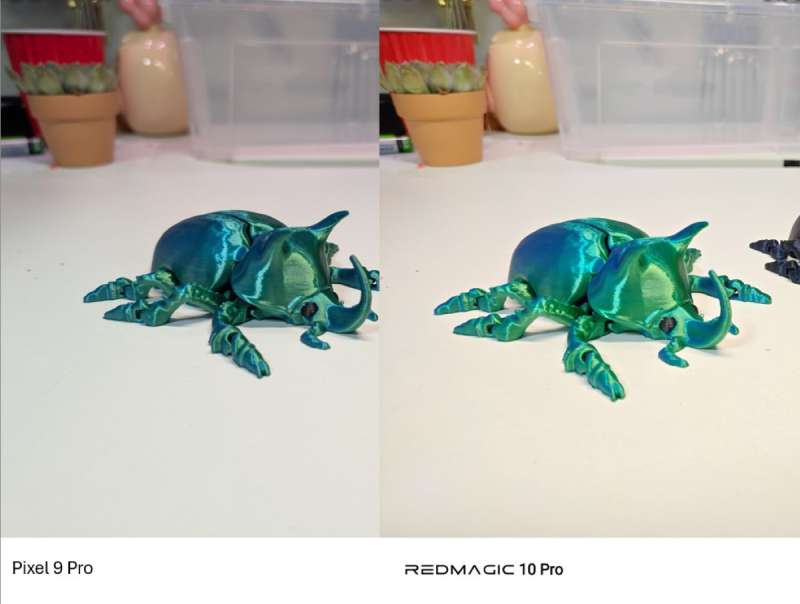
In well-lit still photos, the REDMAGIC 10 Pro gaming smartphone can produce decent pictures, albeit with some obvious post-processing if you compare it to other cameras or phones. People’s faces often looked blurry or smeared, and if there’s motion and/or low-light the pictures turned out mediocre to terrible. Unfortunately, if capturing key moments of family is important to you the REDMAGIC 10 Pro gaming smartphone might not be the best choice, but this phone is marketed to people who are looking for hardcore mobile gaming performance above all else. The camera app also plasters a big “REDMAGIC 10 Pro” watermark on photos, which took some digging through settings menus to find and turn off. Speaking of settings, I was able to get much better pictures near the end of the review period by turning off features like “automatic beauty filters” as well. Nothing was as good as I get with the Pixel 9 Pro, but the resulting pictures and videos are much better than the last REDMAGIC 8S phone I reviewed. The front facing camera remains a blurry smudgy mess, but it works in a pinch for the random video call and is completely invisible when not in use.
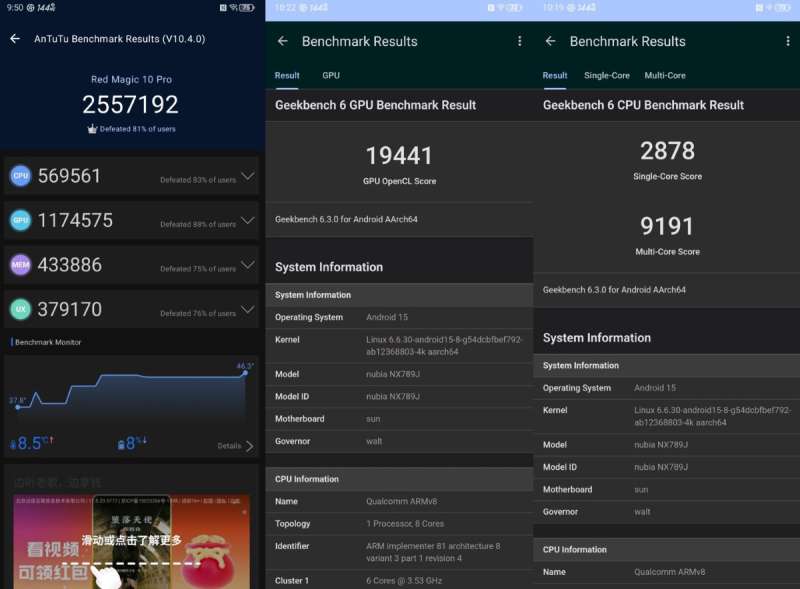
The Geekbench 6 benchmarks show the REDMAGIC 10 Pro gaming smartphone falling behind the iPhone 16 Pro on single core score but beating it by a similar margin on the multi-core score. The Galaxy S24 Ultra and latest Google Pixels couldn’t match either score so the Snapdragon 8 Elite chipset is showing its prowess here.
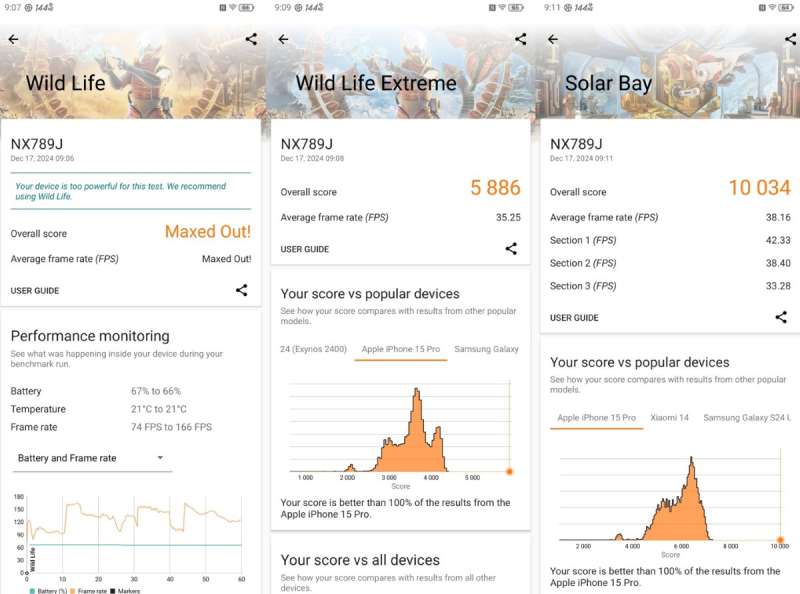
3D benchmarks were a different story, with the REDMAGIC 10 Pro gaming smartphone easily beating almost everything else on the market including all the flagships from Apple, Samsung, and Google. This phone will play anything you throw at it, and should be an emulation monster as well for retro ROMS if that’s something you’re looking for.
The phone did get hot when stress testing it, though it didn’t throttle much (if at all) after repeated loops for 10 minutes of benchmarks. Without the case, the entire back and edges of the phone were uncomfortable to touch after the stress test, but this didn’t happen during regular gaming at all (I think it takes an artificial benchmark to fully utilize this phone’s hardware, regular games only use a fraction of the power).
The screen is beautiful, among the best I’ve seen. It can also get eye-searingly bright, easily visible in bright daylight, though there’s no anti-glare coating so you do sometimes have to angle the phone if the screen content is dark and there are bright reflections around you.
Battery life is phenomenal, even with hours-long gaming sessions it lasted for 2-3 days per charge and charged up to full in ~10 minutes from 35% or so. If you were using this as a daily driver and not doing marathon gaming sessions, you’d easily get multiple days between charges on the regular.
Final thoughts
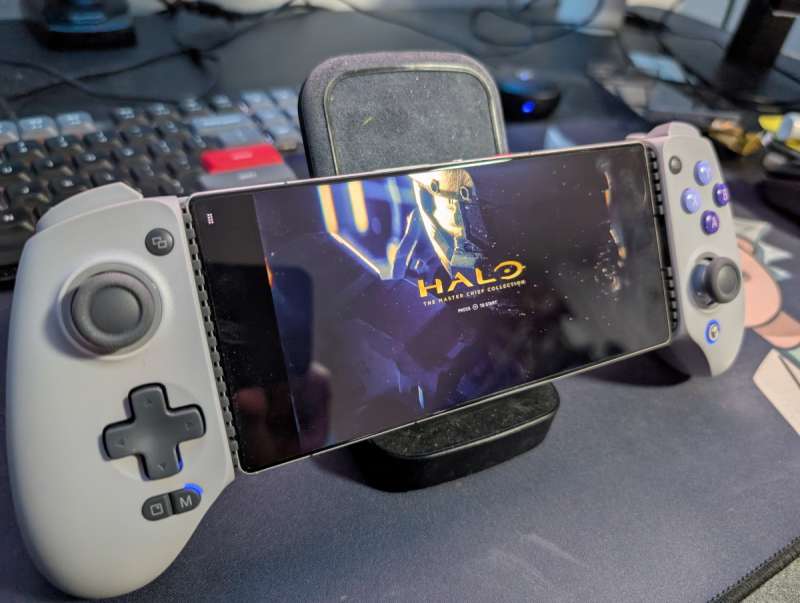
For the price, if you’re looking for a powerful gaming phone with a great screen, the REDMAGIC 10 Pro gaming smartphone is probably your best choice on the market today. As I was finishing this review, my Pixel 9 Pro developed a pink vertical stripe (indicating a hardware issue with the screen), and I’m on my way to pick up a SIM card to use the REDMAGIC 10 Pro gaming smartphone as my daily driver for a bit while the Pixel is repaired. We’ll see if I switch back after a week or two!
What I like about the REDMAGIC 10 Pro Gaming Smartphone
[stextbox id=”pros”]
- More than enough power for everything
- Great price compared to other similar gaming phones
- Phenomenal screen and great speakers
- Not bigger/heavier than other mainstream flagships
What needs to be improved?
- No IP weather rating (unsurprising due to the open-air fan system) – carry a sealable bag if there’s a chance of rain!
- Cameras are fine but not great
- You’ll probably want a good mobile phone grip controller; the corners of the phone can result in sore hands during long gaming sessions.
- Only 1 year of major updates/3 years of security updates promised
Price: $649-999 ($649 Lightspeed 12G/256G model reviewed)
Where to buy: REDMAGIC and Aliexpress
Source: The sample of this product was provided for free by REDMAGIC. REDMAGIC did not have a final say on the review and did not preview the review before it was published.


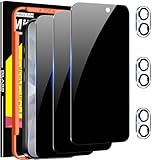
Gadgeteer Comment Policy - Please read before commenting
Great review! I have to admit I’m a bit jealous of the color lol. I got mine just before the Lightspeed version was announced. Fancy a trade lol?
Anyway, I must agree about the phone! Pretty much everything you said has been my experience too.
And for the software, I use Nova launcher and is has mostly eliminated some of the more annoying quirks but it can’t get rid of all of them unfortunately.
I love this white colorway too! (so yeah, no trades, sorry. 🙂 )
I have loved Nova in the past, I’ll have to install it on this phone.
Haha well it was worth a shot lol!
Yeah sadly Nova is really the only main launcher that gets support. There are others, but Nova is still the best imo.